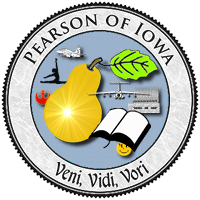Notes from a Federal Reviewer as found in a Grantstation article.
by Sandra Jewell, Grant Writing Consultant and Writer
The Objective (Peer) Review
"The applications have arrived and the objective review begins."
The central procedure in the federal funding cycle is the objective, or peer, review, which is carefully, legally, designed to maintain the integrity of the decision making process.
Before the peer review panel meets, non-voting (technical) reviewers from the branch sponsoring the RFA vet each application to ensure its compliance with the goals of the branch.
Because objective review is so crucial to the ethical strength of the process, the peer reviewers who score the application are never from the branch soliciting the proposal because the likely applicants are generally constituents of that branch, sometimes known personally to branch staff.
The grant writer would do well to remember that funding decisions rest largely in the hands of reviewers who almost certainly have no direct experience with the subject area.
There are other important issues to remember when replying to an RFA:
First, no one is ever hired by an agency specifically to review grant applications. Reviewers take time away from their day jobs, usually in other parts of the agency, to do this as a service to the soliciting branch. They also know that their branch will need reviewers for their own RFAs.
The reviewer is often given three to five applications to evaluate within a brief time frame. Before the review panel meets, s/he first must invest the considerable effort needed to get up to speed with a new subject area and with the needs of the funding branch as documented in the RFA and any supporting materials. The next step is to read and score the applications, each of which can easily require a full day, and then to spend one or more days participating on the panel.
The entire review process is a massive investment of time and emotional energy and can leave reviewers bleary eyed.
It’s been said that half of all grant applications are poorly written, which may be an underestimate. And to be honest, almost all applications make for tedious reading for reviewers who, as mentioned earlier, are rarely more than temporarily and peripherally involved in the subject.
There are several strategies to consider when developing a response to an RFA that will reinvigorate a reviewer:
First, to help ensure that a proposal ends up in the fundable range, which will generally be well above 90 points on a scale to 100, present a great, new, idea. Reviewers love to have the possibility of helping along a creative and significant initiative.
Although grant writers may have little control over the proposed project, they have considerable control over something equally essential: its presentation. If a grant writer can create an application that is professional, well written, and responsive without being terminally colorless, reviewers will be grateful. More important, they’ll pay attention.
Here are a few more suggestions:
Many requirements are included in an RFA but one of the most crucial is unwritten: Responders must convince the reviewer that the proposal is important. Every word in the application should be strictly, concisely, targeted to that goal. That means that the writer should diligently avoid unexplained assumptions and field-specific jargon.
Conversely, there is no point in over explaining anything that is common knowledge. Reviewers may regard too much irrelevant verbiage as a loss of focus within the proposal and, worse, have their own attentiveness derailed by insignificant details.
No matter how good the idea, it’s not going to sell itself. So, right up front in the beginning paragraphs of the narrative, tell the reader why this proposal is worth doing. Never assume that the reviewer knows or will spend extra time filling in gaps that should be part of the presentation. If applicable, spell out what is known, what is unknown, and where the proposed activities fit. Bring the reviewer up to speed at the start or risk the possibility of permanently losing traction.
Don’t underestimate the potential for confounding the reviewer in the dozens of pages of detail that comprise the usual application. Eliminate cross references that require diversions to another part of the proposal and, where feasible, include an abstract-type summary of each section.
Applications that do well are concise and clear. They flow. They have none of the confusing juxtapositions and inconsistencies that so often baffle and frustrate reviewers. They tell why the project activities are needed, what the applicant expects to achieve, and the methods that will be used. They explain how their progress will be assessed and what happens if and when federal funding ends. Depending on the RFA and agency goals, reviewers often expect funded proposals to be eventually self sustaining.
The application should be internally consistent. Nothing is quite as unmistakable, or as jarring, as an application put together by a number of writers with different writing styles. To get the money in cases like this, someone must do the editing.
In terms of style, another extreme is the application transparently created by a coolly disinterested, professional grant writer. Occasionally an application is so slick it reads as though it was untouched by human hands, sort of like a house decorated by Holiday Inn. Proposals that sound as though humans are only an after thought rarely do well in the review process.


No comments:
Post a Comment